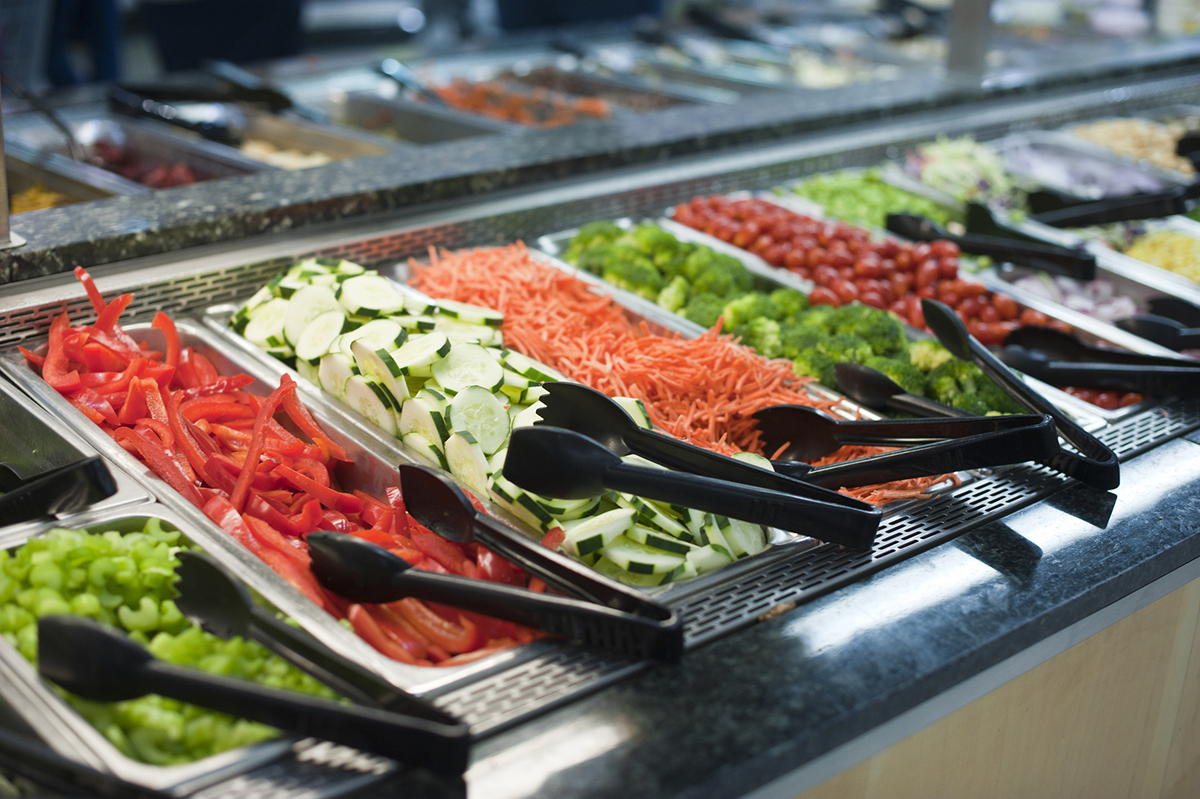Common Nutrition Mistakes You’re Probably Making

Salad bar photo via istock.com/JuanMonino
From time to time, we all knowingly and willingly make nutrition missteps. We choose fries instead of a side salad. We have a second scoop of ice cream. We grab takeout when we’re too exhausted to look at the stove. It happens, and it’s okay.
Arguably more dangerous are the nutrition blunders you don’t even know you’re making. We asked three local dietitians to share the most common misconceptions and mistakes clients make—because, chances are, you’ve fallen victim to the same ones.
Kara Lydon
Bonafides: Lydon is the registered dietitian behind the Foodie Dietitian and Nourish Your Namaste.
The mistake: Believing all calories are made equal.
“Just as you don’t want to judge a book by its cover, you don’t want to judge a food by its calorie content,” Lydon explains. “Four hundred calories of a chocolate cake is not the same as 400 calories of a quinoa, tofu, and veggie bowl.”
The fix: Read ingredient lists and nutrition labels, but don’t focus your energy on the calorie count. “Rather than focusing on calories, I tell my clients to look at the big nutritional picture,” Lydon says, stressing that protein and fiber will help keep you full and satisfied.
Nancy Oliveira
Bonafides: She’s the senior nutritionist at Brigham and Women’s Faulkner Hospital.
The mistake: Giving salads a health halo.
Foods with a “health halo” are often perceived to be more nutritious than they are. Granola bars, sports drinks, and flavored yogurts are notorious members of this club, but Oliveira says salads—particularly restaurant salads—can be offenders, too.
“Today’s salads may use healthful ingredients but are super-sized, loaded with items like fruits, nuts, grains, and cheese,” Oliveira says. “Salad dressings also wear that health halo. An olive oil vinaigrette can have as many calories as a ranch or Caesar dressing.”
The fix: If you can, make your salads at home rather than going out. If you simply don’t have time, order as if you were compiling ingredients in your own kitchen. “Follow this formula: choose lots of greens and non-starchy veggies, one serving of protein, and one extra, [such as] cheese, nuts, avocado, or fruit,” Oliveira says. “Use your favorite dressing, but drizzle, don’t pour. Don’t go fat-free as a little fat improves the absorption of the nutrients in the salad.”
Kerri Hawkins
Bonafides: Hawkins is an Arlington-based registered dietitian and certified personal trainer.
The mistake: Making short-term changes instead of lifestyle swaps.
“The number one thing that people forget is that whatever step they take to improve their diet, improve their health, they have to keep doing,” Hawkins says. “A lot of my patients will hit a milestone or hit a victory and then they say, ‘Okay, I’m done.'”
The fix: Get the word “diet” out of your vocabulary, and start thinking in terms of lifestyle. Hawkins recommends making sustainable switches—choosing whole foods over processed snacks, eating plenty of fruits and vegetables, focusing on a food’s overall value rather than one nutrient, adopting a fitness plan—rather than following the latest fad diet.
That’s especially important because every plan won’t work for every person, Hawkins notes. “I see people who are very successful who are Paleo, and I have patients who are totally vegan and that works best for them,” she says. Figure out what works for you, and stick with it.


